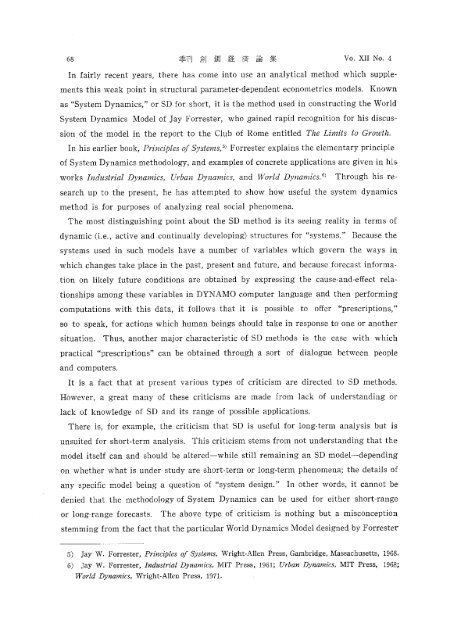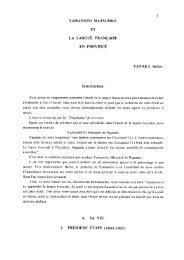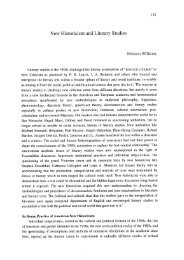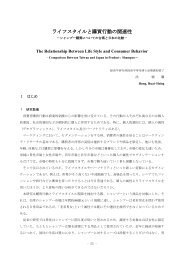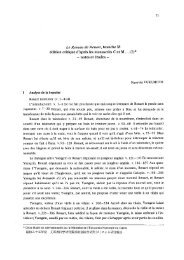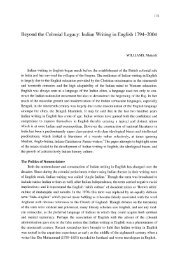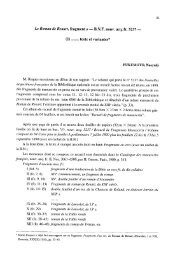vision and methodology in the new economics of global ...
vision and methodology in the new economics of global ...
vision and methodology in the new economics of global ...
Create successful ePaper yourself
Turn your PDF publications into a flip-book with our unique Google optimized e-Paper software.
68 ~[J4i1GVI ''4 R a XVo. XII No. 4<br />
In fairly recent years, <strong>the</strong>re has come <strong>in</strong>to use an analytical method which supple-<br />
ments this weak po<strong>in</strong>t <strong>in</strong> structural parameter-dependent econometrics models. Known<br />
as "System Dynamics," or SD for short, it is <strong>the</strong> method used <strong>in</strong> construct<strong>in</strong>g <strong>the</strong> World<br />
System Dynamics Model <strong>of</strong> Jay Forrester, who ga<strong>in</strong>ed rapid recognition for his discus-<br />
sion <strong>of</strong> <strong>the</strong> model <strong>in</strong> <strong>the</strong> report to <strong>the</strong> Club <strong>of</strong> Rome entitled The Limits to Growth.<br />
In his earlier book, Pr<strong>in</strong>ciples <strong>of</strong> Systems,5> Forrester expla<strong>in</strong>s <strong>the</strong> elementary pr<strong>in</strong>ciple<br />
<strong>of</strong> System Dynamics <strong>methodology</strong>, <strong>and</strong> examples <strong>of</strong> concrete applications are given <strong>in</strong> his<br />
works Industrial Dynamics, Urban Dynamics, <strong>and</strong> World Dynamics.6) Through his re-<br />
search up to <strong>the</strong> present, he has attempted to show how useful <strong>the</strong> system dynamics<br />
method is for purposes <strong>of</strong> analyz<strong>in</strong>g real social phenomena.<br />
The most dist<strong>in</strong>guish<strong>in</strong>g po<strong>in</strong>t about <strong>the</strong> SD method is its see<strong>in</strong>g reality <strong>in</strong> terms <strong>of</strong><br />
dynamic (i.e., active <strong>and</strong> cont<strong>in</strong>ually develop<strong>in</strong>g) structures for "systems." Because <strong>the</strong><br />
systems used <strong>in</strong> such models have a number <strong>of</strong> variables which govern <strong>the</strong> ways <strong>in</strong><br />
which changes take place <strong>in</strong> <strong>the</strong> past, present <strong>and</strong> future, <strong>and</strong> because forecast <strong>in</strong>forma-<br />
tion on likely future conditions are obta<strong>in</strong>ed by express<strong>in</strong>g <strong>the</strong> cause-<strong>and</strong>-effect rela-<br />
tionships among <strong>the</strong>se variables <strong>in</strong> DYNAMO computer language <strong>and</strong> <strong>the</strong>n perform<strong>in</strong>g<br />
computations with this data, it follows that it is possible to <strong>of</strong>fer "prescriptions,"<br />
so to speak, for actions which human be<strong>in</strong>gs should take <strong>in</strong> response to one or ano<strong>the</strong>r<br />
situation. Thus, ano<strong>the</strong>r major characteristic <strong>of</strong> SD methods is <strong>the</strong> ease with which<br />
practical "prescriptions" can be obta<strong>in</strong>ed through a sort <strong>of</strong> dialogue between people<br />
<strong>and</strong> computers.<br />
It is a fact that at present various types <strong>of</strong> criticism are directed to SD methods.<br />
However, a great many <strong>of</strong> <strong>the</strong>se criticisms are made from lack <strong>of</strong> underst<strong>and</strong><strong>in</strong>g or<br />
lack <strong>of</strong> knowledge <strong>of</strong> SD <strong>and</strong> its range <strong>of</strong> possible applications.<br />
There is, for example, <strong>the</strong> criticism that SD is useful for long-term analysis but is<br />
unsuited for short-term analysis. This criticism stems from not underst<strong>and</strong><strong>in</strong>g that <strong>the</strong><br />
model itself can <strong>and</strong> should be altered—while still rema<strong>in</strong><strong>in</strong>g an SD model—depend<strong>in</strong>g<br />
on whe<strong>the</strong>r what is under study are short-term or long-term phenomena; <strong>the</strong> details <strong>of</strong><br />
any specific model be<strong>in</strong>g a question <strong>of</strong> "system design." In o<strong>the</strong>r words, it cannot be<br />
denied that <strong>the</strong> <strong>methodology</strong> <strong>of</strong> System Dynamics can be used for ei<strong>the</strong>r short-range<br />
or long-range forecasts. The above type <strong>of</strong> criticism is noth<strong>in</strong>g but a misconception<br />
stemm<strong>in</strong>g from <strong>the</strong> fact that <strong>the</strong> particular World Dynamics Model designed by Forrester<br />
5) Jay W. Forrester, Pr<strong>in</strong>ciples <strong>of</strong> Systems, Wright-Allen Press, Gambridge, Massachusetts, 1968.<br />
6) Jay W. Forrester, Industrial Dynamics, MIT Press, 1961; Urban Dynamics, MIT Press, 1968;<br />
World Dynamics, Wright-Allen Press, 1971.


